Emergency dredging of the Hay River aids in maintaining key marine operations and critical resupply link
July 16, 2024
Rebekka Lindskoog
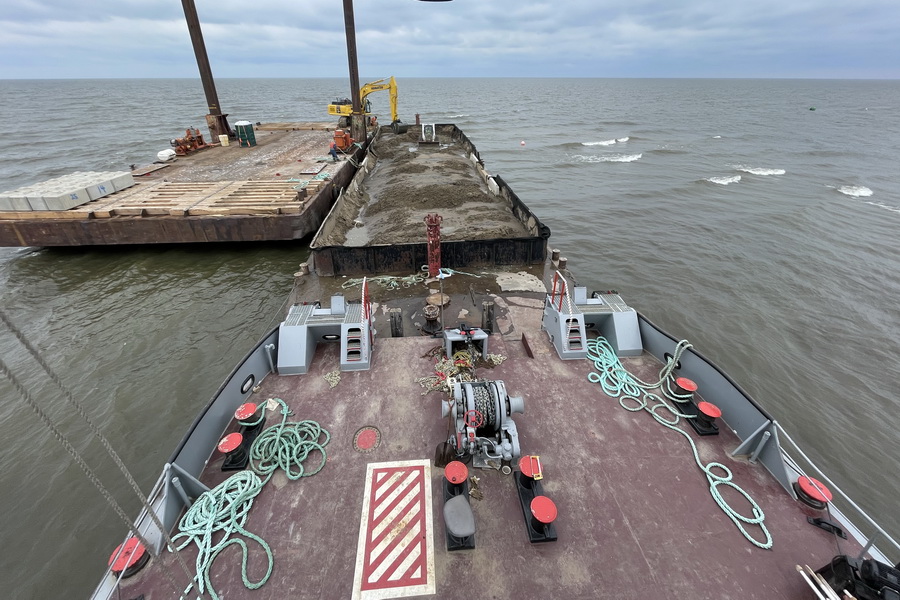
The Hay River Harbour is the primary operational base for Marine Transportation Services (MTS), a marine shipping service operated by the Government of the Northwest Territories. As the key hub for rail, highway, and marine networks serving 12 communities, MTS provides marine resupply services for transporting petroleum products and other bulk freight.
Bulk resupply, particularly of fuel, is a complex and multimodal network across the Northwest Territories. Each community's resupply profile is unique and is influenced by a combination of storage infrastructure capacity, duration and timing of road access, marine river or ocean access, lateral staging options, and other supply-chain factors. Marine resupply forms a critical component of bulk resupply. Alternative options require significant lead time and contingency options are logistically and cost prohibitive.
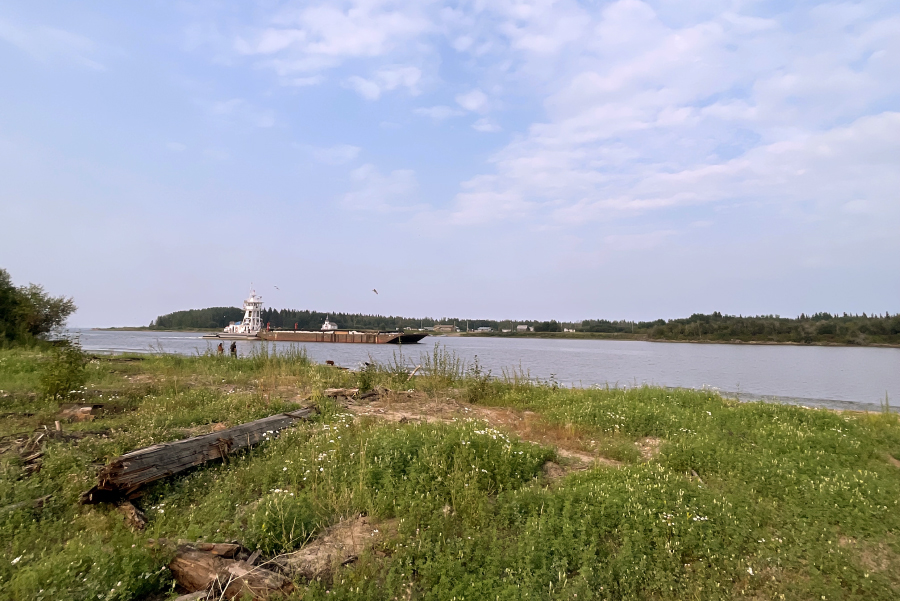
The harbour was last significantly dredged in 1997. Since then, the buildup of sediment in the harbour has created navigation hazards for marine vessels and now threatens this important marine supply-chain hub. The harbour required restoration to maintain the viability of key marine operations for both government and industry.
Project Manager, Rebekka Lindskoog, says, "The current bathymetry and water elevation data suggest that insufficient depth will threaten resupply operations. Restoration is critical to protecting public safety and infrastructure to restoring a safe and reliable resupply route."
In 2022, the Town of Hay River flooded during spring break-up. This event likely contributed high amounts of sediment into the river. As the summer progressed, the water levels began to drop at an abnormal rate. By the early fall, vessels were being grounded on the shoals, particularly at the outfall into Great Slave Lake.
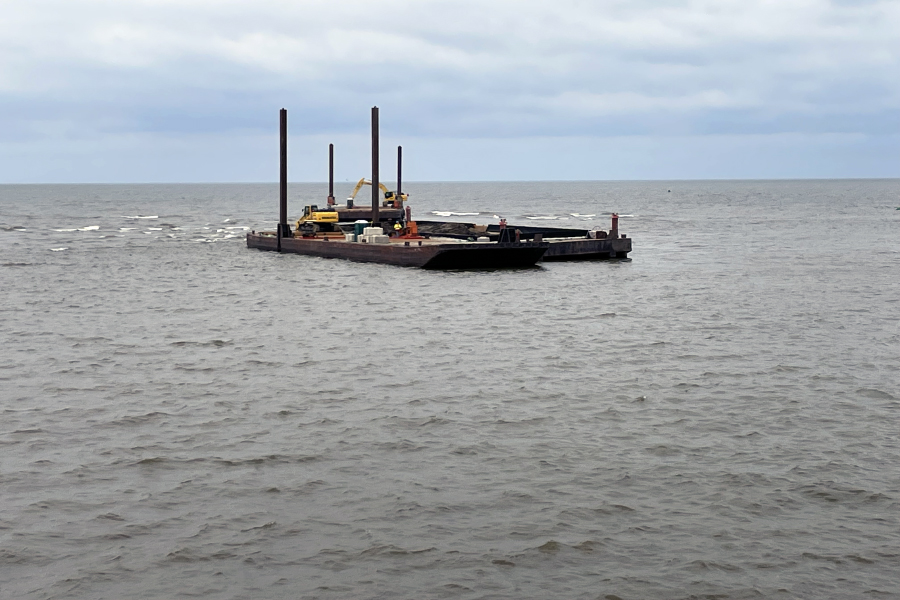
On behalf of the Government of the Northwest Territories, Department of Infrastructure, Westmar Advisors retained Associated for the environmental and regulatory leadership for the emergency dredging program. The contractor for the dredging program is locally owned Rowes Construction.
Rebekka tells us, "We focused on developing a way to restore navigability in the channel, recognizing the extreme constraints posed by the compressed timing to satisfy regulatory and procurement requirements." The technical design established a channel width and depth that would provide minimum passage requirements of the largest draft vessel and a width that would facilitate a single-barge, wide configuration for MTS, with a safety buffer.
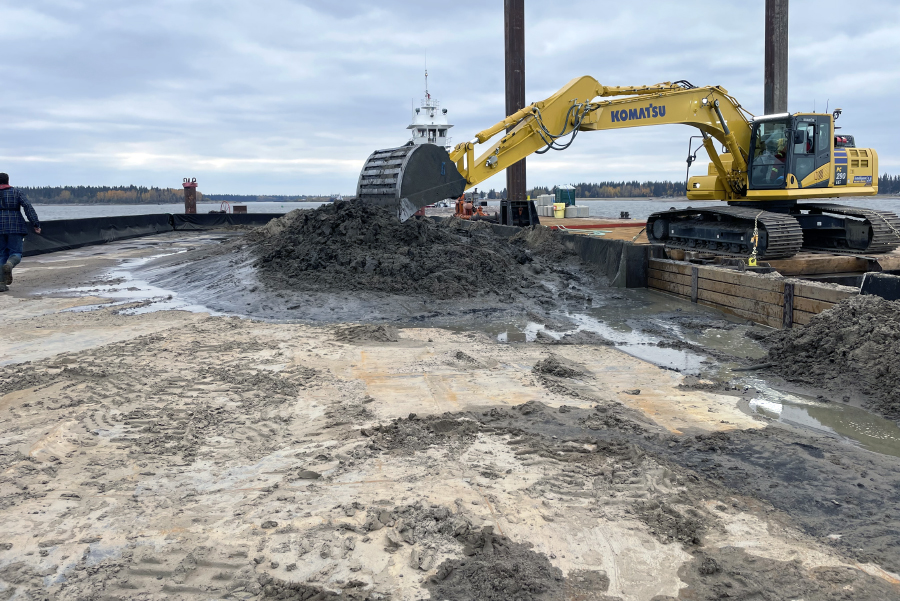
The project involved mechanically dredging sediment from two areas in the Hay River to open an emergency marine navigation channel 30 metres wide and 2.4 metres deep.
The team received the required regulatory approvals under the emergency provision, in time for the dredging program to be conducted during the least-risk fish window.
"Two days after we began dredging, the Town of Hay River had to be evacuated due to wildfire."
In 2023, approximately 5,600 cubic metres of sediment was dredged and about 78,000 cubic metres remains to be removed in 2024.
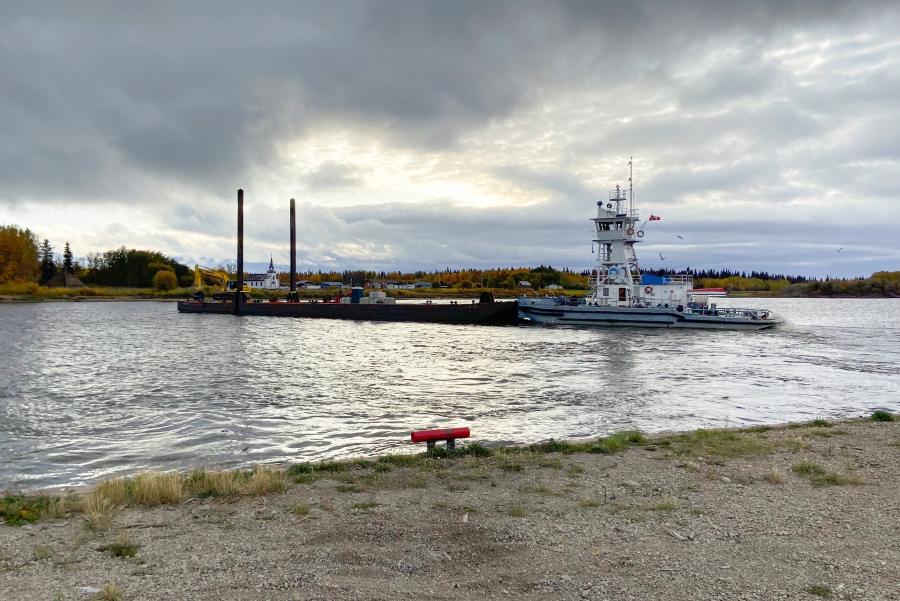
"We have updated and maintained the regulatory approvals for the second year of dredging, including permission from Fisheries and Oceans Canada for an extended window, as a result of community engagement feedback and support for the program."
The remainder of the emergency dredging program is currently underway and will include working alongside with Indigenous auditors from the local Indigenous communities.
Parallel to the emergency program, Associated is leading a multi-disciplinary feasibility analysis for the Hay River long-term dredging program.
Associated's key personnel on the project are Rebekka Lindskoog, Candace Bryks, Cassio Ishii, Brett Elmslie, Dean Foster, Tyler Mehler, Ryley Corcoran, and Brian MacGillivray.






